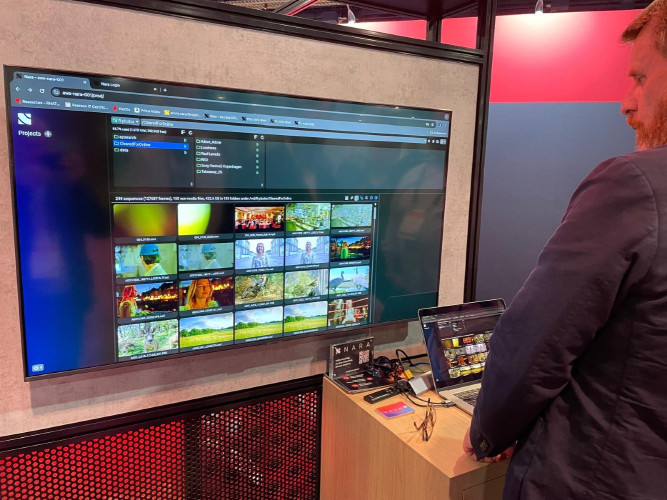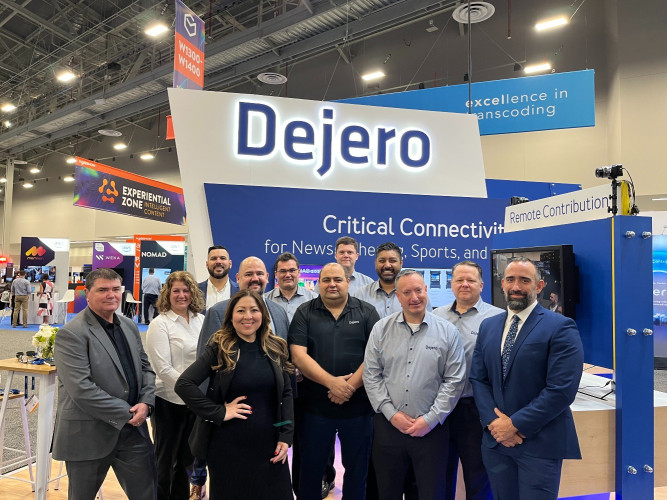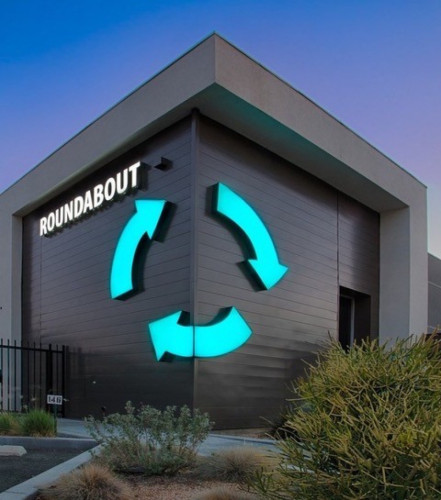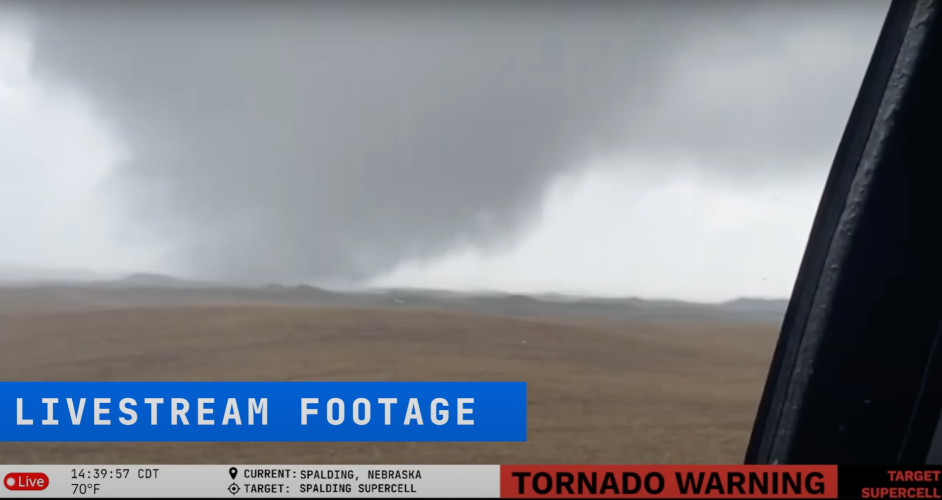The evolution of camera connectivity and the HPX600

Author: Kieron Seth#
Published 1st July 2013
Tape in, tape out. Cable in, video out. Card in, card out. Simpler times: productions orchestrated by an army of runners, tape op’s and engineers, with transmission to TV, ingest via a VTR and a room dedicated to storing media.
Today’s production team has changed. It’s become a small elite squad, tasked with multi-channel playout, multi-resolution recording, live streaming, media archiving and remote operations.
And the camera is going from functioning as the mere front end to being at the centre of the production workflow.
Enter the Card
Memory cards themselves are not stand-still technology. The SD card has progressed from class 2 (2MB/s) to UHS-II at 312MB/s in little over a decade. Robust professional formats have made a similar leap in performance, with Panasonic recently making the leap from P2’s 1.2Gb/s to microP2’s 2Gb/s.
However, while speed and capacity bottlenecks are no longer an issue for video recording, the physical management of cards and importing of data seem somehow inconsistent with every other facet of professional and business life, where tape, optical disk and portable drives are increasingly replaced by central network storage, IP communications, mobile data and cloud platforms.
Recent advances in camcorder technology is evidence that broadcasters are taking this IT world very seriously.
Opportunities for Video Production
For the video producer and event videographer who shoots and edits, file-based capture makes editing faster, but does the arrival of new connectivity carry any significant advantages? Potentially, yes. Events used to face a commercial choice: record an event for distribution, produce live and display on in-venue screens or transmit over satellite to live audiences. The IT revolution has changed all that.
The HDMI or SDI output from any camera can now be ingested into a Teradek Cube wireless encoder. This device, mounted on the camcorder, converts the signal to H.264 and transmits to decoders attached to monitors for a live big screen playout and transmits live, via a router, to an Internet streaming service for external audiences while the camera still records the video at full resolution for archiving and post production.
“We see so many producers using this approach nowadays. It’s so easy, so effective, and, let’s face it, so affordable. In one fell swoop, the ‘video guy’ can produce and record a live event.” Remarked Richard Payne of Teradek’s European distributor, Holdan.
Innovative, straightforward and profitable though that may be, the biggest change that IT has brought about is arguably in broadcast workflows.
The Broadcast Revolution
Panasonic’s new AG-HPX600 is designed not just to fit into television workflows, but to push producers to adopt new ways of working that are extremely efficient. Its connector ports are an instant visual clue: it can include HD-SDI (in and out), HDMI, Ethernet, WiFi and USB.
Beyond the familiar digital video connectors, what is the point of these IT ports?
File Transfer
With the YDX600G encoder board installed in the HPX600, QuickTime files are captured by the camera alongside the native P2 files. Compressed files (from 800Kb/s to 3.5 Mb/s) can be pulled off the camera at any time using the Gigabit Ethernet port or the WiFi dongle. In this way, media can be immediately shared over a network, streamed globally or delivered for breaking TV news. As the .Mov files are complete metadata-rich and time coded proxies, editors can begin high speed post production with the full resolution files re-linked later for final rendering. Files can even be uploaded directly to a cloud solution, such as Aframe, from where remote editors and news teams can access and use the clips.
Live Feed
The low bitrate stream can also be transmitted live over the wireless or wired LAN to any connected device. Not only does this open up live streaming possibilities, but it allows a PC, Mac or tablet to edit native P2 files stored on the camera, create playlists on the P2 card and play out clips from the HPX600’s SDI port. Remote users can also add or amend metadata to the P2 files, making the editing and archiving workflow considerably easier. The camcorder becomes an intelligent and interactive tapeless VTR with full remote access and control.
Extending the Reach
Because the camera’s IT ports deliver an IP feed, the signals can be boosted and extended for transmission over very long distances using portable networking equipment. IntraTec’s Bridge and Bridge Duo can send the files and the stream wirelessly up-to 10 kilometres and share the feed between multiple iPads or laptops. The advantages for outside broadcast for very low cost untethered shooting are clear.
Integrated Cellular Phone Transmission
While a mobile network dongle can be used to transmit the camcorders live output, multi-cell systems, such as Teradek’s Bond combine the power of multiple mobile phone networks for a fast and reliable connection. Panasonic also supports LiveU‘s LU40 cellular device at an even deeper level: The camera’s interface gives camera operators a real-time indication of LiveU’s transmission status and video transmission quality, for instant in-screen information on the stream.
SDI: Cutting the Cable
Panasonic’s vision for their connected cameras accelerates the file-based workflow by enabling the director to monitor the feed and amend the metadata. It embraces global post production and news gathering by facilitating remote proxy-editing and the transmission of compressed files. And it enables streaming direct from the camera itself. However, like every other camcorder, the native files still have to be imported from the memory cards or ingested via SDI.
With Teradek’s Bolt, users can send the HD-SDI feed, uncompressed and with no latency, wirelessly across a studio or a set. Recorders can now capture SDI signals from remotely; directors can monitor full-HD images in real-time and cable-free; original pictures can be displayed on big screens with no loss in video quality.
USB on a Broadcast Camera?
True, a USB port is not unusual on a camcorder. However, usually it’s designed to upgrade the firmware and little else. On the HPX600, it can host an external hard drive: data can be offloaded the P2 cards with no need for a card reader and laptop. As the HPX600 is now compatible with microP2 cards, with the same size as an SD card, users now have multiple very simple and fast data workflow options.
Completing the Picture
With this kind of advance in camera technology, the promise of IT production is being fulfilled. While camcorders will still fulfil their original and core role of capturing, recording and outputting great pictures, the way in which video can be accessed, encoded, amended, streamed and delivered adds a whole new dimension to production workflows. Multiple users can view the live feed; multiple editors can instantly share post production duties and broadcasters can transmit compressed pictures on live TV, even when there is no satellite truck or television uplink facility available.
“In all honesty,” ends Richard Payne, “this is a brave new world for video production. Broadcasters, production companies and camera operators still need to work out how to adjust to the new opportunities. From new connectivity options to new Ethernet-based remote controllers, we think that there is a lot of potential here. Users that have adopted – say wireless iPad monitoring or cellular transmission – would not go back. That said, it can appear daunting but in reality it’s pretty straightforward and really takes video production forward.”


































